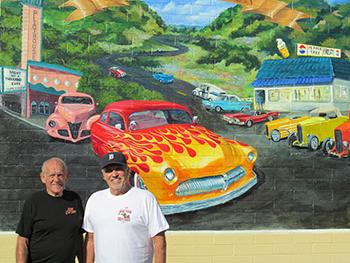Carlsbad CA— According to a staff presentation at Tuesday’s City Council meeting, a stable local economy and diverse business sector are continuing to have a positive effect on the city’s financial health. With operating revenues projected at $251 million for the fiscal year that starts July 1, city staff recommended a spending plan that maintains high service levels for residents while putting money aside for future maintenance needs, the next economic downturn and even a catastrophic event.
A “budget workshop” will be held Tuesday, June 21, from 6 to 7:30 p.m., at the city’s Faraday Administration Center, 1635 Faraday Ave. The workshop is an opportunity for the public to learn about what is being proposed and ask questions directly of city finance staff and department directors. The City Council will consider approval of the final budget at its June 28 meeting.
The preliminary “operating budget,” which includes everything except major construction projects, totals just over $250 million, an increase of 4 percent over last year. Included in the operating budget is the $142 million “general fund operating budget,” which covers most of the day to day city services, like police, fire, libraries and parks.
“People are always interested in the new projects and initiatives,” said city Finance Manager Helga Stover, who presented the proposed budget to the City Council Tuesday. “We have our fair share of those, but, equally important are the investments people can’t see. Those are the ones that make sure residents’ needs will be met, day in and day out, and at a level that really sets the standard for municipal government services.”
Money for the city’s general fund comes from three main sources, property, hotel and sales tax. Following are the projections for the coming fiscal year:
- Property tax: $59 million (up 4 percent)
- Sales tax: $34 million (down 2 percent)
- Transient occupancy tax: $21 million (up 3 percent)
According to Chuck McBride, Administrative Services Director, sales tax is generally healthy, having increased 21 percent from 2012 to 2016. Auto sales, which make up about a quarter of city sales tax revenue, hit an all-time high the last quarter of 2015. Next year’s projected decrease is due mainly to two factors, said McBride. One is the changes at one of the city’s main shopping centers, which has been going through a change in ownership and direction. The other reason is that the state recently paid off Economic Recovery Bonds and will return sales tax owed to the city in the current fiscal year (FY 2015-16), a timing difference that will cause next year’s sales tax receipts to be comparably lower.
“Cities only get a small portion of sales tax and property tax,” said McBride. “Most of this money goes to the state.”
Among the new programs in next year’s proposed budget is the Climate Action Plan, totaling about $1 million. All cities in California are now required to have a Climate Action Plan, with measurable goals for reducing greenhouse gas emissions.
Other new spending focuses on six policy goals set by the City Council in February and support for the Carlsbad Community Vision, a set of nine core value community members said are important for the future of their city:
- Electric vehicle charging stations
- Carlsbad Student Leadership Academy, a new program to help develop tomorrow’s emerging leaders
- A study of alternative coastal transportation options
- Ongoing enhancements to the Village and Barrio
- A new “Book Bike” providing access to library books on the go
- Technical experts to help explore the feasibility of lowering the railroad tracks below street level through the Village
- An increase in funding for the city’s Community Arts Grants program and the popular TGIF Concerts in the Parks
- Body cameras and increased training for the police
- Increased resources for fire inspections and new rescue equipment for the Fire Department
- Expansion of Parks & Recreation youth programs
The budget includes five new city staff positions and eliminates three vacant positions, bringing the total number of full time city employees to 676. This is down from a recent high of 717 in 2009. According to Stover, the city has been able to maintain and even increase its level of service with fewer staff by taking advantage of technology, simplifying city processes and the strategic use of contractors.
Fees for things like trash collection and building permits, are proposed to be increased consistent with inflation, except in some areas where the cost of providing the service resulted in a fee increase that was higher or lower than the rate of inflation. The city may only charge for the actual cost of providing services and periodically assesses these costs and adjusts fees accordingly.
The proposed Capital Improvement Program for fiscal year 2016-17, which outlines approximately $64.5 million in funding for construction projects, was presented June 7. The combined budget will be presented for final adoption at the June 28 City Council meeting.
The preliminary operating budget and Capital Improvement Program budget are available on the city website.




